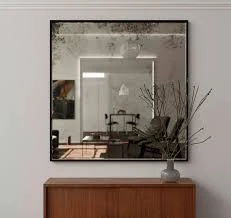

The Marvel of Reflective Float Glass
Reflective float glass is an innovative material that has revolutionized the architectural and design landscape in recent years. Combining the essential properties of traditional float glass with reflective capabilities, this special type of glass has become a staple in modern construction and furnishings. Its unique characteristics offer not only aesthetic appeal but also significant functional advantages, making it a favored choice among architects, designers, and builders.
At its core, float glass is produced by floating molten glass on a bed of molten tin, resulting in a smooth, uniform pane. The introduction of a reflective coating during the manufacturing process enhances these properties, allowing the glass to reflect a substantial amount of incoming light. This reflective layer is typically made from a thin coating of metal oxides, which can be applied to one or both sides of the glass. This innovation results in a visually striking product that mirrors its surroundings while allowing natural light to filter through.
One of the key advantages of reflective float glass is its ability to improve energy efficiency in buildings. By reflecting solar radiation, it helps maintain cooler indoor temperatures during hot summer months, reducing the need for excessive air conditioning. This not only lowers energy costs but also lessens the environmental impact of buildings, aligning with the growing emphasis on sustainability in construction. Buildings fitted with reflective glass demonstrate remarkable performance in energy efficiency ratings, making them appealing to environmentally conscious consumers and developers alike.

In addition to energy savings, reflective float glass enhances the visual comfort of indoor spaces
. It minimizes glare, creating a more pleasant atmosphere for occupants while still allowing natural light to permeate. The aesthetic quality of reflective glass also contributes significantly to the modern architectural style. Skyscrapers and commercial buildings adorned with reflective glass facades create stunning visuals that interact with the surrounding environment, reflecting the sky and cityscape, thereby transforming the way we experience urban environments.The versatility of reflective float glass extends beyond commercial applications. It is increasingly used in residential architecture, where homeowners seek to create stylish and functional living spaces. From innovative window designs to elegant sliding glass doors, reflective glass can be integrated into various elements of home design. Moreover, it is popular in interior spaces, such as offices and public buildings, where it can serve as a partition or decorative feature while maintaining an open, airy feel.
However, it is essential to consider the potential downsides of reflective float glass. In certain contexts, excessive reflection can cause discomfort or distract drivers if used inappropriately. Therefore, careful consideration and planning are necessary to ensure that reflective glass is used in ways that enhance rather than detract from its surroundings.
In conclusion, reflective float glass is more than just a building material; it is a multifaceted solution that combines beauty, efficiency, and functionality. Its ability to reflect light while allowing natural illumination makes it a valuable asset in modern architecture. As we move towards increasingly sustainable building practices, the role of reflective float glass is likely to expand, leading to innovative designs that harmonize with the environment. With its versatility and significant advantages, reflective float glass is poised to remain a key player in the future of construction and interior design, shaping our built environment for years to come.